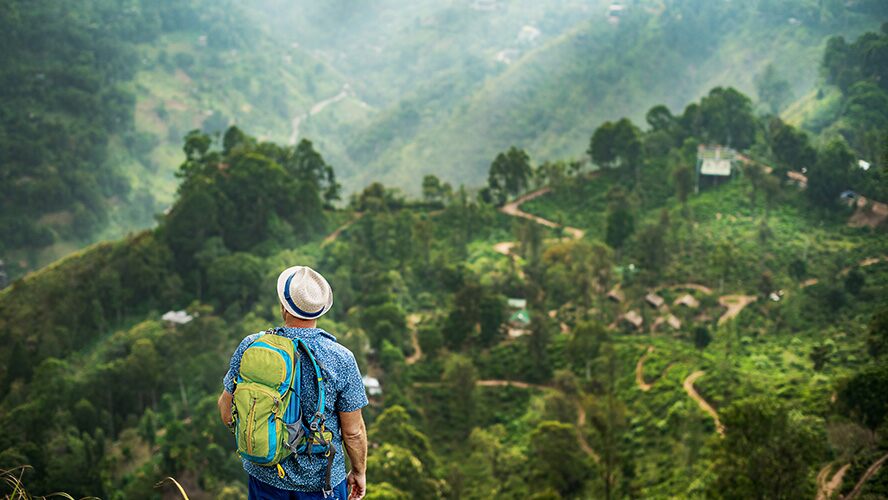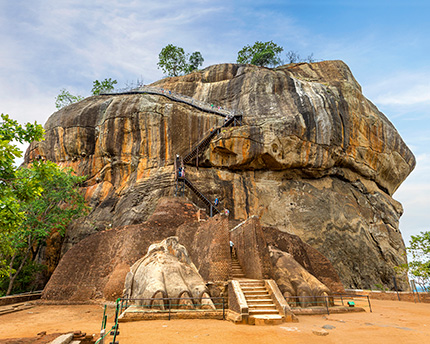Located 148 kilometres north-east of Colombo and 72 kilometres north of Kandy, in the heart of Sri Lanka’s so-called Cultural Triangle, the town of Dambulla is famous for one of the island’s wholesale markets and, particularly, for the magnificent Golden Temple complex. With its awe-inspiring interior scattered with images of Buddha, the Golden Temple is an emblem of Sri Lanka.
It is thought that Dambulla was a place of worship from when King Valagamba took refuge here having been expelled from Anuradhapura during the first century B.C. When he regained the throne, he ordered that splendid temples be created inside caves, and these were further enriched by other later kings.
What is there to see in Dambulla? Apart from the caves, it is worth visiting the Museum of Wall Paintings, the Produce Market and the Golden Temple. And here’s a suggestion for something different: a hot-air ballon flight over neighbouring Kandalama Lake would be an unforgettable experience.
Dambulla: its history and interesting facts
Historians believe that Dambulla has been inhabited since between the seventh and third centuries B.C. It is known that the caves provided refuge for King Valagamba during his 14-year exile from the kingdom of Anuradhapura, and that he was protected by the Buddhist monks who practised meditation in this area. When the king returned to his kingdom, he ordered the construction of a temple carved from the rock in the caves as a gesture of gratitude to the monks. There is also evidence of ancient civilisations here. In any case, Dambulla is a fascinating place if you are interested in learning the history of Buddhism and in discovering the archaeological remains.
The Golden Temple and the caves

Declared a World Heritage Site by UNESCO in 1991, the Golden Temple, or Dambulla Cave Temple, is a complex of caves that houses temples adorned with impressive sculptures and pictures relating to the life of Buddha. They contain 153 statues of Buddha, three of kings of Sri Lanka and four of gods in total. The murals cover an area of 2,100 square metres. The rock itself rises to 160 metres above ground level, and over 80 caves have been counted on the outskirts of Dambulla. These are the most important:
Devaraja Cave
The most interesting feature of this cave is a 15-metre-long, reclining ‘Buddha’ carved into the rock. Also depicted are Ananda, a faithful disciple of Buddha, and other, seated Buddhas, as well as Vishnu. However, the paintings on the walls and ceilings have been seriously damaged by smoke from the incense.
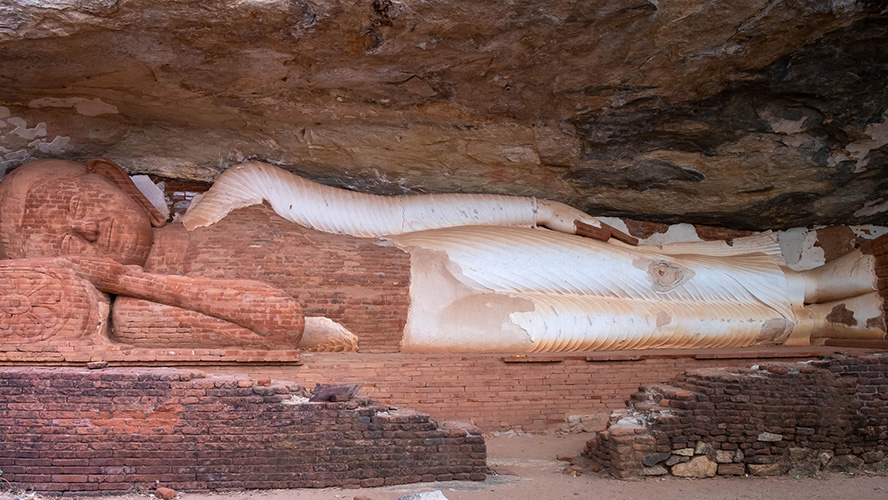
King Maharaja Lena Cave
This is the biggest and most spectacular cave in the complex. It stretches for 52 metres from east to west, and its ceiling is seven metres high. It houses one painted wooden statue of King Valagamba and another of King Nissanka Malla, in addition to several ‘Buddhas’. The murals portray scenes from the life of Buddha and from the history of Sri Lanka. There is a tank to collect the water that continually drips from the ceiling.
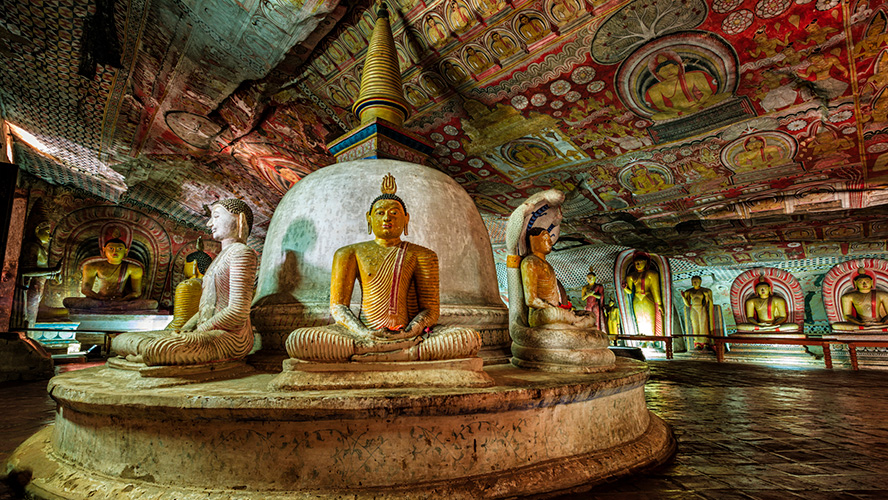
Maha Aluth Vihara Cave
This cave is the smallest of the temples. Here, the images were created using brick and plaster, and visitors can see a 10-metre-long reclining ‘Buddha’, and paintings depicting the Hindu deities Vishnu and Kataragama. It is said that this cave, the Great New Temple, was the work of King Kirti Sri Rajasinghe, one of Kandy’s last monarchs.

Sri Lanka’s Cultural Triangle
The so-called ‘Cultural Triangle’ consists of a series of places that have been designated a UNESCO World Heritage Site. They include the ruins of Anuradhapura and Polonnaruwa, in addition to the city of Kandy and the archaeological site at Sigiriya. This area also boasts a large number of natural attractions (such as the parks of Minneriya and Kaudulla) which are a gathering point for elephants during the dry season.
Sigiriya
Also known as ‘the Lion Rock’, Sigiriya is considered to be the eighth wonder of the world. It is Sri Lanka’s great archaeological treasure It was on top of this impressive, 200-metre-tall, vertical rock that King Kasyapa built his splendid palace. For centuries, an enormous Buddhist monastery also stood here. In any case, this fascinating site was declared a World Heritage Site by UNESCO in 1982.
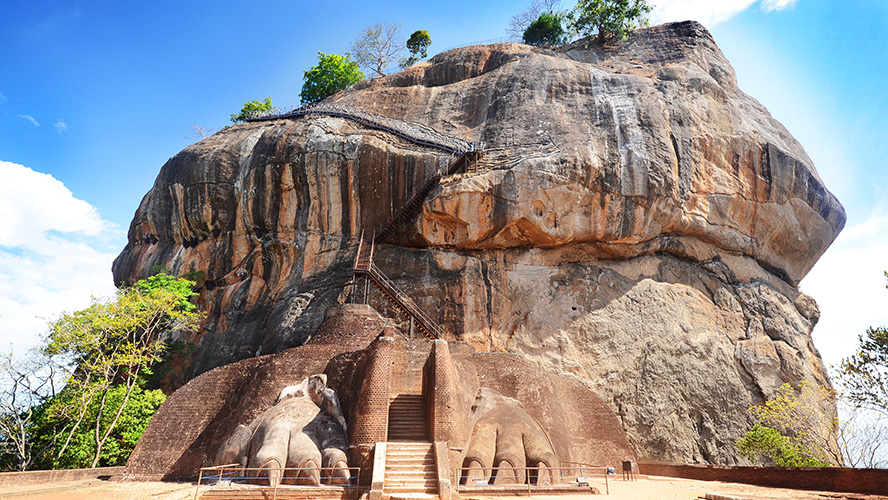
Polonnaruwa
These are the ruins of a city that was once the heart of the Singhalese kingdom founded by Vijayabahu, and which reached the peak of its glory during the twelfth century. The city had palaces, monasteries, temple, gardens, and the reservoir or ‘sea’ of Parakrama. However, the place was abandoned in 1293, and devoured by the jungle. The city’s ‘resurrection’ began during the twentieth century, and in 1982 it was declared a World Heritage Site by UNESCO.
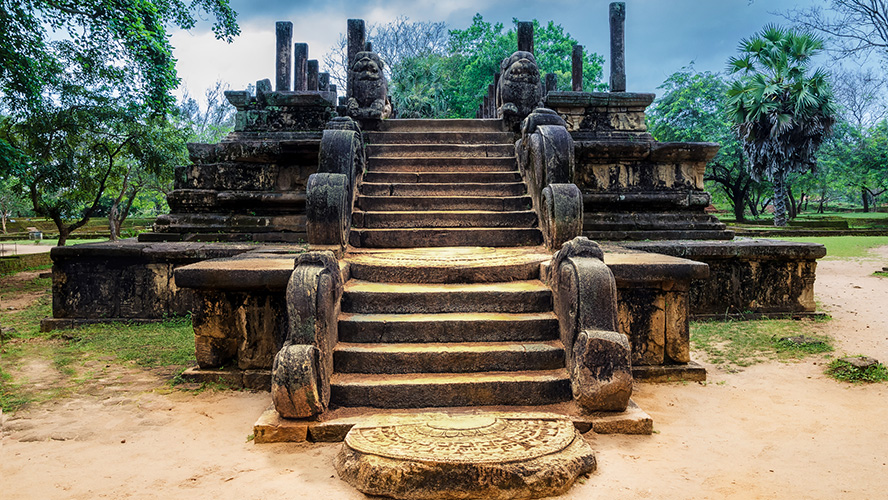
Anuradhapura
Founded in the fourth century A.D., this city was one of Sri Lanka’s great centres of power. It had temples, monasteries, immense ‘dagobas’, lakes, reservoirs and palaces that attest to its splendour during its ninth-century heyday. Its decline began in the tenth century, and it fell into neglect until it was restored in the nineteenth century. During the fifteenth century, it was home to over 5,000 monks.
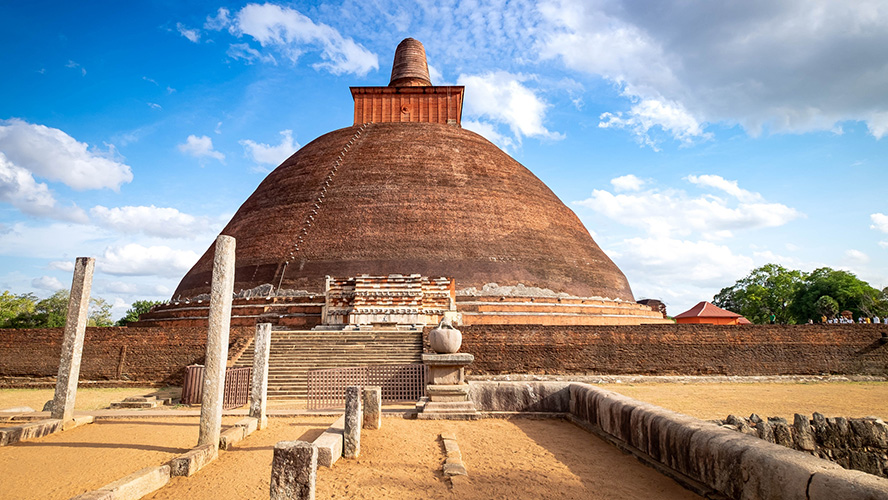
Where to eat in Dambulla
It would be a shame to leave Dambulla without trying at least one of its best-known traditional dishes. It should be borne in mind that intense flavours are characteristic of the area’s gastronomy, thanks to the use of curry, pepper, cardamom, cinnamon, saffron, cloves and ginger. It is for good reason that Sri Lanka is known as ‘the spice island’. Apart from curry with rice, Dambulla’s most famous dishes are kottu, samosas, roti (a type of bread), a succulent chicken curry, fried noodles, kokis (sweets in the shape of flowers), and king coconut, which is pure natural coconut water. The following are some of Dambulla’s most interesting restaurants: Sakura Cooking, Athula, Rithu, Benthota Bake House, Tropical Village, Mango Mango and Tinaya Treats.




































































